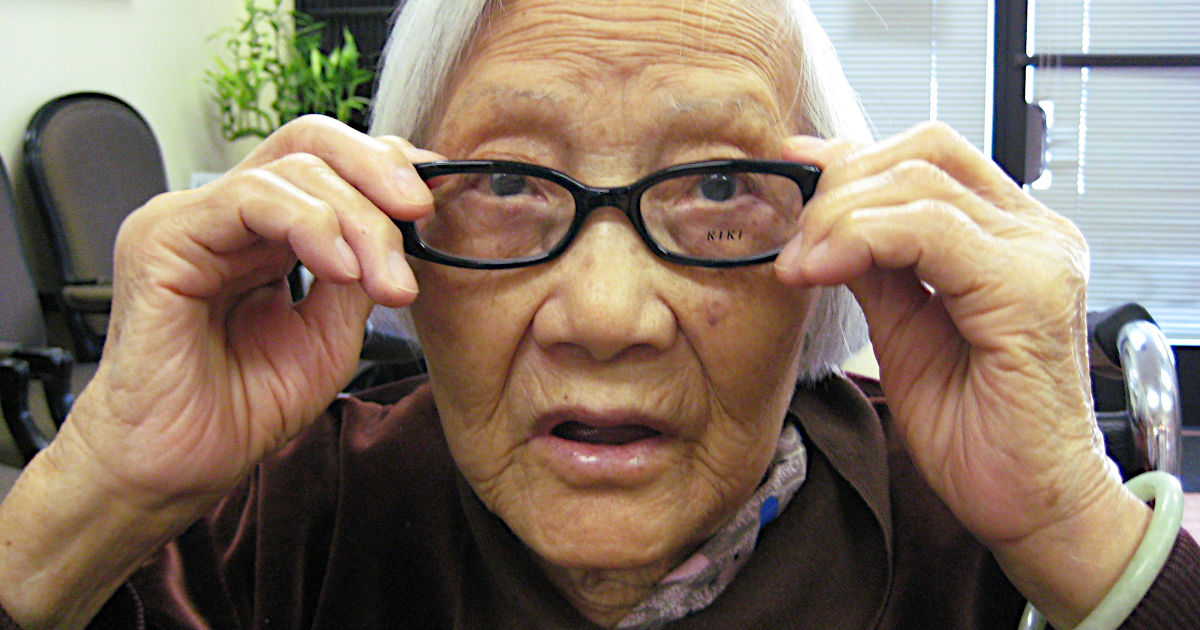The End Again Degeneration and Visual Culture in Modern Spain May 2017

Image Credit: pudgeefeet (flickr)
Stem Cell-Derived Epithelium Cells May Reveal Light at the End of the Tunnel
Human retinal pigment epithelium cells made from stem cells in the lab hold promise in restoring vision
Blindness, eye diseases, and vision impairment
As part of the Global Burden of Disease study, epidemiologists estimated that in 2020, 43.3 million people worldwide were blind1. The leading global causes of blindness in individuals aged 50 years and older in 2020 were:
- Cataracts
- Glaucoma
- Undercorrected refractive error
- Age-related macular degeneration
- Diabetic retinopathy
In the U.S. (2015), about 1.02 million people were blind, and roughly 3.22 million people had impaired vision2. According to data from the CDC's Disability and Health Data System (2019), the nationwide prevalence of 'vision disability' was 5%3. The CDC predicts that the population of adults with blindness and vision impairment will double due to the rapidly aging population, coupled with the increasing incidence of diabetes and other chronic diseases that contributes to vision loss4.
Vision loss is a debilitating condition that affects both patients and family members. Loss of sight negatively impacts one's quality of life, independence, mobility, emotional wellbeing, social function, and even cognitive capabilities5. The economic burden of blindness and vision impairment is also significant – the total economic cost was estimated to be about $139 billion (2013) in the U.S6. Vision impairment does not only affect visual health; it also correlates with poorer physical (falls, injury, worsening of other chronic conditions) and mental health (depression, anxiety7). Vision loss alone resulted in the loss of 283 000 disability-adjusted life years (DALYs)6. Therefore, the disease burden8 of blindness and vision impairment remains to be a public health concern.
Age-related macular degeneration
Macular degeneration, also known as age-related macular degeneration (AMD), is a neurodegenerative disease that is one of the leading causes of blindness and vision impairment. Advanced age is a major risk factor of AMD; therefore, AMD primarily affects elderly individuals. About 11 million individuals are affected with AMD in the U.S, and by 2050, the number is expected to increase to 22 million9. Patients with AMD have damage to the macula, a part of the retina, resulting in a progressive loss of central vision. There are two types of AMD – dry and wet AMD. Dry AMD is characterized by the thinning of the macula over time, gradually resulting in vision loss. Dry AMD is the more common, accounting for 70-90% of AMD cases10. Wet AMD is a late-stage AMD where abnormal blood vessels grow in the back of the eye, causing damage to the macula. Currently, there are several treatment options for wet AMD, such as anti-VEGF drugs and photodynamic therapy11. However, the main goal of those treatment options is to prevent the growth of blood vessels or to seal abnormal blood vessels underneath the macula in order to preserve existing vision and prevent further deterioration of vision. Those treatments are not designed to restore vision. In addition, there are no treatments for early or late dry AMD.
Retinal cell therapy for treating retinal diseases
The use of retinal cell replacement therapy has recently been explored as a feasible treatment option for retinal diseases that underly vision loss, such as AMD and even glaucoma. Human retinal pigment epithelium (RPE) is a layer of pigmented cells that play several critical roles in supporting photoreceptor function and maintaining visual function12. Retinal degeneration seen in retinal diseases, such as in the case of AMD, results in vision impairment. Therefore, retinal cell replacement therapy aims to replace damaged or diseased RPE cells with healthy, functioning ones in order to improve or even restore visual function.
Sources of human retinal pigment epithelium cells
There are a few sources of human RPE cells that could be used for retinal cell replacement therapy:
- Adult RPE isolated from cadaveric donors13
- Fetal RPE or retinal progenitor cells (RPCs) isolated from fetal eyes14
- Immortalized adult RPE cells that are manipulated such that the cells are able to proliferate and grow continuously.
However, there are disadvantages to using these cells. It is difficult to culture adult RPE cells in the lab as they readily lose their functional properties and molecular signatures. Fetal RPE cells were able to better preserve their function when cultured in vitro; they were pigmented, uniform in size and shape, and retained their molecular signatures15. Lastly, both adult RPE cells and fetal RPE cells are limited in numbers and largely depend on the availability of donors. Although immortalized adult RPE can be easily cultured in vitro and be generated in large numbers, they do not physiologically represent actual RPE cells and may pose cancer risks when used for replacement therapy. Most importantly, experiments involving the use of these cells for retinal cell replacement therapy did not result in vision recovery16.
Generating human retinal pigment epithelium cells from human pluripotent stem cells (hPSCs) in the lab
Human pluripotent stem cells (hPSCs) such as human embryonic stem cells (hESCs) and human-induced pluripotent stem cells (iPSCs) have emerged to be a viable and sustainable source of human RPE cells. hPSCs are, by definition, capable of differentiating into any cell type in the body and are self-renewal, which means that they are able to proliferate while retaining their pluripotency. This essentially means that hPSCs could be used to generate an unlimited supply of human RPE cells for retinal cell replacement therapy.
Over the past decade, efforts have been channeled into developing a differentiation protocol to generate human retinal pigment epithelium (RPE) cells from hPSCs. Masayo Takahashi, a pioneer in stem cell-derived RPE cells from Japan's RIKEN Institute, came up with ways to generate RPE cells as well as RPE sheets from human iPSCs. The RPE sheets were shown to express molecular signatures and exhibit characteristics similar to native RPE. They also showed upon transplantation of iPSC-derived RPE sheets into nonhuman primates, no adverse effects were reported. Earlier this year, researchers from Singapore also showed that stem cell-derived RPE cells (monolayers) that were transplanted under the macula of nonhuman primates were able to survive and maintain healthy photoreceptors17. In another study, when human iPSCs-derived RPE cells were transplanted in a rat model of retinal degeneration, visual function in these rats was rescued18. Recently, researchers have even developed methods to generate 3-D retina organoids that improve visual function when transplanted into animal models of RPE dysfunction19.
Clinical trials
There are already several past and ongoing clinical trials for retinal cell replacement therapy, conducted by biotech companies, research institutions, and even big pharmas16 , 20. More recently, the National Eye Institute (NEI) of the National Institute of Health (NIH) launched the first U.S. clinical trial of iPSC-derived RPE cells for the treatment of dry AMD21. They will be reprogramming patients' blood cells into iPSCs before differentiating the iPSCs into RPE cells. The cells will then be grown in one-cell thick sheets (on a biodegradable biological scaffold) before transplantation into the eyes of the patients.
However, the first-ever retinal cell replacement therapy was performed in Japan on a 70—year old Japanese woman22. This experiment was conducted by a group of researchers led by Takahashi. The patient's skin cells were first reprogrammed into iPSCs, and the iPSCs were then differentiated into RPE cells and transplanted into the patient's eyes. Takahashi and colleagues performed a similar experiment in 2017 where they transplanted patient iPSC-derived RPE cells into a patient with wet AMD23.
Moving forward
There is light at the end of the tunnel – stem cell-derived RPE holds great promise in treating retinal diseases and restoring vision caused by underlying retinal dysfunctions. With the NIH, biotech companies, and pharmaceutical giants pouring in large amounts of resources into performing research and clinical trials to test the efficacy and safety of stem cell-derived RPE cells for retinal cell replacement therapy, stem cell-derived RPE as a treatment option will soon be a reality.
About the Author: Nicole Pek is a stem cell biologist and enthusiastic science communicator. She has worked on using human pluripotent stem cells to study cellular development in multiple organ systems, to model complex human diseases, and screen for therapeutics that could treat the diseases. Outside of the lab, Nicole plays a pro-active role in communicating to the public through her science blog 'Two Cells' and her education podcast ' The Diploid Duo'.
References
1. Bourne, R. et al. Trends in prevalence of blindness and distance and near vision impairment over 30 years: an analysis for the Global Burden of Disease Study. The Lancet Global Health 9, e130–e143 (2021).
2. Varma, R. et al. Visual Impairment and Blindness in Adults in the United States: Demographic and Geographic Variations From 2015 to 2050. JAMA Ophthalmol 134, 802–809 (2016).
3. CDC. Disability and Health Data System (DHDS) | CDC. Centers for Disease Control and Prevention https://www.cdc.gov/ncbddd/disabilityandhealth/dhds/index.html (2021).
4. Burden of Vision Loss | CDC. https://www.cdc.gov/visionhealth/risk/burden.htm (2020).
5. National Academies of Sciences, E. et al. The Impact of Vision Loss. Making Eye Health a Population Health Imperative: Vision for Tomorrow (National Academies Press (U.S.), 2016).
6. Witteborn, John, R., David. The Future of Vision: Forecasting the Prevalence and Cost of Vision Problems. (2014).
7. Demmin, D. L. & Silverstein, S. M. Visual Impairment and Mental Health: Unmet Needs and Treatment Options. Clin Ophthalmol 14, 4229–4251 (2020).
8. Gordois, A. et al. An estimation of the worldwide economic and health burden of visual impairment. Global Public Health 7, 465–481 (2012).
9. Pennington, K. L. & DeAngelis, M. M. Epidemiology of age-related macular degeneration (AMD): associations with cardiovascular disease phenotypes and lipid factors. Eye Vis (Lond) 3, 34 (2016).
10. Common Eye Disorders and Diseases | CDC. https://www.cdc.gov/visionhealth/basics/ced/index.html (2020).
11. Age-related macular degeneration (AMD) - Treatments. nhs.uk https://www.nhs.uk/conditions/age-related-macular-degeneration-amd/treatment/ (2017).
12. Strauss, O. The Retinal Pigment Epithelium in Visual Function. Physiological Reviews 85, 845–881 (2005).
13. Akrami, H. et al. Retinal Pigment Epithelium Culture;a Potential Source of Retinal Stem Cells. J Ophthalmic Vis Res 4, 134–141 (2009).
14. Maminishkis, A. et al. Confluent monolayers of cultured human fetal retinal pigment epithelium exhibit morphology and physiology of native tissue. Invest Ophthalmol Vis Sci 47, 3612–3624 (2006).
15. Ablonczy, Z. et al. Human Retinal Pigment Epithelium Cells as Functional Models for the RPE In Vivo. Invest. Ophthalmol. Vis. Sci. 52, 8614–8620 (2011).
16. Oswald, J. & Baranov, P. Regenerative medicine in the retina: from stem cells to cell replacement therapy. Ther Adv Ophthalmol 10, 2515841418774433 (2018).
17. Liu, Z. et al. Surgical Transplantation of Human RPE Stem Cell-Derived RPE Monolayers into Non-Human Primates with Immunosuppression. Stem Cell Reports 16, 237–251 (2021).
18. Surendran, H. et al. Transplantation of retinal pigment epithelium and photoreceptors generated concomitantly via small molecule-mediated differentiation rescues visual function in rodent models of retinal degeneration. Stem Cell Research & Therapy 12, 70 (2021).
19. Lin, B. et al. Retina Organoid Transplants Develop Photoreceptors and Improve Visual Function in RCS Rats With RPE Dysfunction. Invest Ophthalmol Vis Sci 61, 34 (2020).
20. Zarbin, M., Sugino, I. & Townes-Anderson, E. Concise Review: Update on Retinal Pigment Epithelium Transplantation for Age-Related Macular Degeneration. STEM CELLS Translational Medicine 8, 466–477 (2019).
21. NIH launches first U.S. clinical trial of patient-derived stem cell therapy to replace and repair dying cells in retina | National Eye Institute. https://www.nei.nih.gov/about/news-and-events/news/nih-launches-first-us-clinical-trial-patient-derived-stem-cell-therapy-replace-and-repair-dying.
22. Cyranoski, D. Japanese woman is first recipient of next-generation stem cells. Nature (2014) doi:10.1038/nature.2014.15915.
23. First donor iPSC-derived RPE cell transplantation in AMD patient Center for Developmental Biology | RIKEN CDB. http://www.cdb.riken.jp/en/news/2017/topics/0404_10343.html.
Suggested Reading
Stay up to date. Follow us:
 |  |  |  |  |  |
Source: https://www.channelchek.com/news-channel/Stem_Cell_Derived_Retinal_Pigment_Epithelium_Cells___Vision_for_the_Future
0 Response to "The End Again Degeneration and Visual Culture in Modern Spain May 2017"
Post a Comment